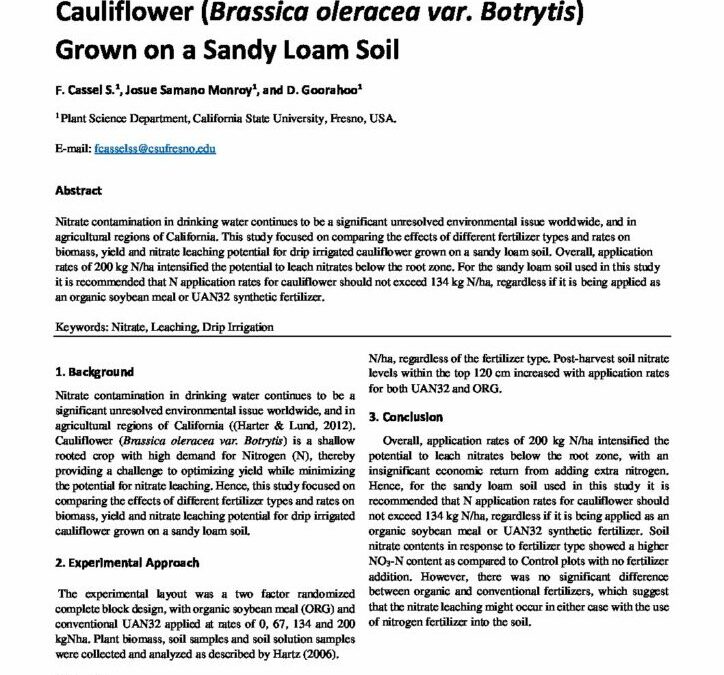Nitrate Leaching Potential for Drip Irrigated Cauliflower

Nitrate contamination in drinking water continues to be a significant unresolved environmental issue worldwide, and in agricultural regions of California. This study focused on comparing the effects of different fertilizer types and rates on biomass, yield and nitrate leaching potential for drip irrigated cauliflower grown on a sandy loam soil. Overall, application rates of 200 kg N/ha intensified the potential to leach nitrates below the root zone. For the sandy loam soil used in this study it is recommended that N application rates for cauliflower should not exceed 134 kg N/ha, regardless if it is being applied as an organic soybean meal or UAN32 synthetic fertilizer.
Nitrate contamination in drinking water continues to be a significant unresolved environmental issue worldwide, and in agricultural regions of California ((Harter & Lund, 2012). Cauliflower (Brassica oleracea var. Botrytis) is a shallow rooted crop with high demand for Nitrogen (N), thereby providing a challenge to optimizing yield while minimizing the potential for nitrate leaching. Hence, this study focused on comparing the effects of different fertilizer types and rates on biomass, yield and nitrate leaching potential for drip irrigated cauliflower grown on a sandy loam soil.
